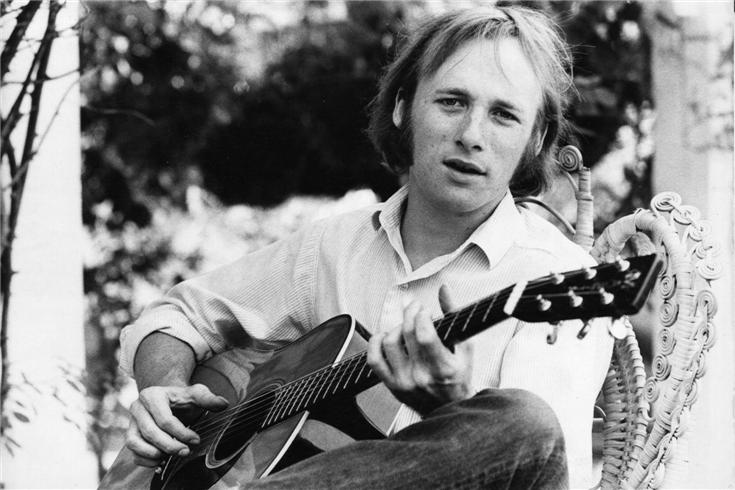 In his memoir, Neil Young goes out of his way to praise Stephen Stills, calling him a brother and a genius. They have a shared history, having met on the folkie circuit and as the core songwriters in Buffalo Springfield, not to mention their time in CSNY.
In his memoir, Neil Young goes out of his way to praise Stephen Stills, calling him a brother and a genius. They have a shared history, having met on the folkie circuit and as the core songwriters in Buffalo Springfield, not to mention their time in CSNY.
It wasn’t all friendly, though. Buffalo Springfield collapsed in on itself in the late 60s, and CSNY splintered apart during an ego and cocaine fueled 1974 tour. But maybe the cruelest split of all came in 1976.
Neil Young and Steven Stills were touring Long May You Run under the Stills-Young Band banner. The record had some drama in it’s making, including a moment where Young wiped David Crosby and Graham Nash’s vocals from the record, but it was a successful release, peaking at 26 on the Billboard 200. Today Long May You Run is best remembered for one of Young’s signature tunes: the title track, written for the car he abandoned in Blind River, but the other creative half of the band was in top form, too, filling half the record with his compositions.
Soon, that half was supporting the joint record himself. A few dates into the Stills-Young tour, Young skipped a gig and sent Stills a telegram, closing with the laconic phrase “eat a peach, Neil.” While Young could make up dates later in the year with Crazy Horse, Stills was locked into gigs and the tour rolled on.
He was backed by just two musicians: bassist George “Chocolate” Perry and drummer Joe Vitale, both of whom had worked with him before. Still, it was a stripped down affair: no lengthy guitar workouts, no harmony vocals, none of the usual trappings from his gigs with Young, Buffalo Springfield or CSN. As the King Biscuit Flower Hour taped his show at New York’s Palladium on October 26, everything was clicking.
The surviving show isn’t quite a representation of the full gig. It’s been chopped down for broadcast and cut out of sequence. But it’s a great sounding show and flows well, with the occasional erratic cut back and forth. And the music is top notch.

It opens with Stills on piano, singing “I Give You Give Blind,” then so new he tells the audience he’s reading it off a sheet of paper. It’s a driving piece of rock, Stills banging his piano. He slows down for a more soulful version of “Four Days Gone.”
Three songs into this tape comes the first song from the album he’s touring: “Black Coral.” “This is a song about a special place I got to go,” he says before launching into the song. It’s a little overstuffed on the album, but it works gorgeously here, stripped to it’s bare essentials: Stills singing, making occasional stabs at piano and a jazzy backing from Vitale and Perry.
There’s a bit of an edit here as the tape shifts to a solo Stills, alone with an acoustic guitar. He plays a cover of Graham Nash’s “Taken At All,” then a quick version of “Statesline Blues” before settling into the older CSN number “Helplessly Hoping.” It loses something of its charm without Nash and Crosby, but it’s also a showcase for Stills driving, pounding acoustic guitar (which, now that I think about it, was another Stills aspect Young went out of his way to praise).
After a short break, it’s back to the full band and Stills at the piano for a slow, moody “Myth of Sisyphus,” before Stills picks up his electric guitar and plays the opening lines of “Make Love to You.” “You know when you’re in the bar, running your scam by the chick,” says Stills by way of explanation, “this is what the band should be singing.” It’s restrained: Stills playing is mostly strumming or bluesy lines, nothing like his freewheeling playing on CSNY jams like “Carry On or Southern Man.”

There’s another quick edit and Stills is back at the piano for a speedy run-through of “49 Bye-Byes,” which he deftly segues into an equally speedy “For What It’s Worth.” While it only faintly resembles the original, it sounds like Stills is having the most fun he’d had all night, almost daring Vitale and Perry to keep up with his speedy piano runs.
Then it’s back to the acoustic guitar for another cover of Fred Neils’ “Everybody’s Talkin’,” before Stills says “All right, let’s get down to business,” before kicking into the last song on the recording: “Treetop Flyer,” a bluesy song, with Stills’ guitar so dry it practically kicks up dust. It’s about a pilot who runs booze, guns, and probably drugs, too, across the border: “I fly low, I’m in high demand.” It’s a great tune and one of the first songs he recorded as a solo artist, but for some reason it didn’t see release until 1991’s Stills Alone.

Here the recording cuts out, right as the announcer says there’ll be more after the break. Around here, the tour cut out too. Stills moved on to new projects, releasing Thoroughfare Gap a couple years later, then a new CSN album the year after.
But this recording is a nice snapshot of him at an interesting junction: abandoned by his friend, on the road touring an album he probably wanted to get away from. He occasionally sounds upbeat, but generally he sounds like a man alone on an empty stage: not exactly overwhelmed, but certainly wishing he was back down by the black coral.


